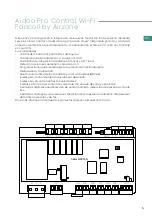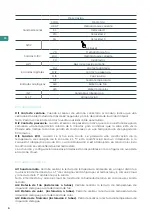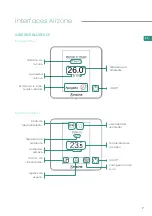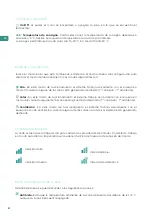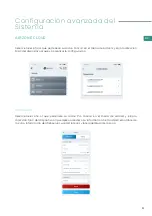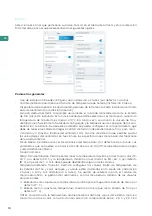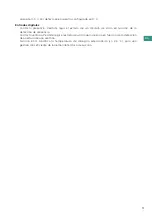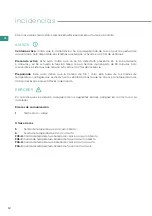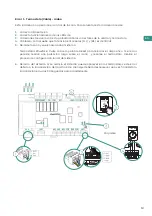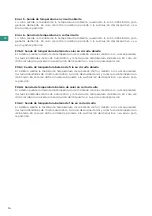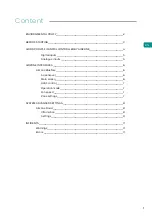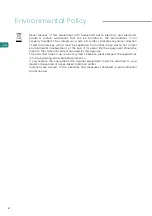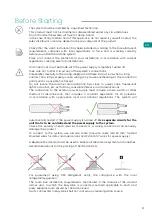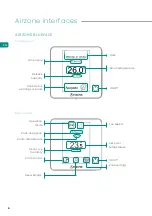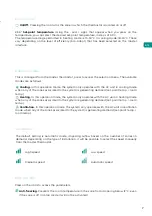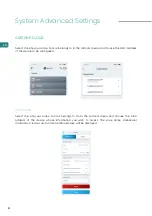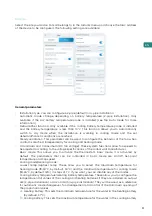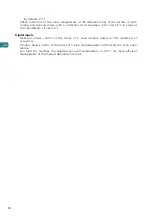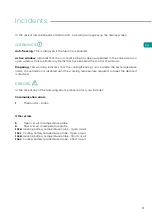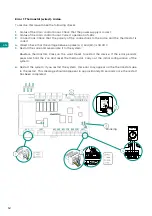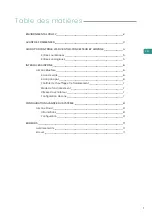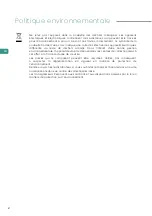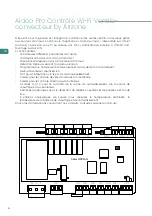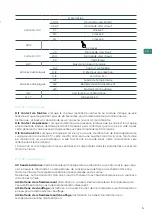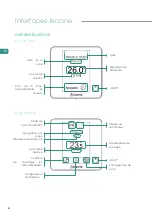
5
EN
Description
0-10 V outputs
COOL
Cooling mode
HEAT
Heating air demand
FL
Speed 1
FM
Speed 2
FH
Speed 3
SW2
5 s Reset
0-10 V outputs
Y 0
Cooling air demand
W 0
Heating air demand
F 0
Fan
AZ1
Airzone connection bus
Digital inputs
DI1
Window contact
DI2
Presence contact
DI3
Eco function
Analogue inputs
AI1
Temperature probe
AI2
Cooling battery
AI3
Heating battery
INT
Integration Bus output
N L T
Power supply
Digital inputs
DI1 Window contact.
When the window sensor connected to the module indicates that a
window is open for more than 60 seconds, for indoor unit demand.
Note: Use shielded cable to connect the window contact.
DI2 Presence contact.
When the presence sensor indicates that the zone is unoccupied, an
internal timer starts for 5 minutes to confirm that the zone is empty. After this time the zone
will go into Sleep mode with a 90 minute sleep timer.
DI3 ECO function.
When this mode is activated, there will be a modification of the setpoint
temperature of the zone of 2.5 ⁰C, this modification will be an increase if the zone is working in
Cool mode, or a decrease if it is working in Heat mode. This modification will be reflected in the
thermostat.
The activation and configuration of these inputs are available in the advanced settings in
Airzone Cloud.
Analogue inputs
AI1 Remote probe.
Allows the room temperature reading to be taken in a place other than
where the thermostat is located. The setpoint temperature will be set by the thermostat and/or
Airzone Cloud and the room temperature reading by the probe.
Note: The thermostat and Airzone Cloud will not display the relative humidity if a remote sensor
is used.
AI2 Cooling battery
(4-pipe installation). Allows the supply water temperature reading for the
cooling demand.
AI3 Heating battery
(4-pipe installation). Allows to read the water supply temperature for the
heating demand.
AI2 Cooling/heating battery
(2-pipe installation). Allows to read the supply water temperature.

